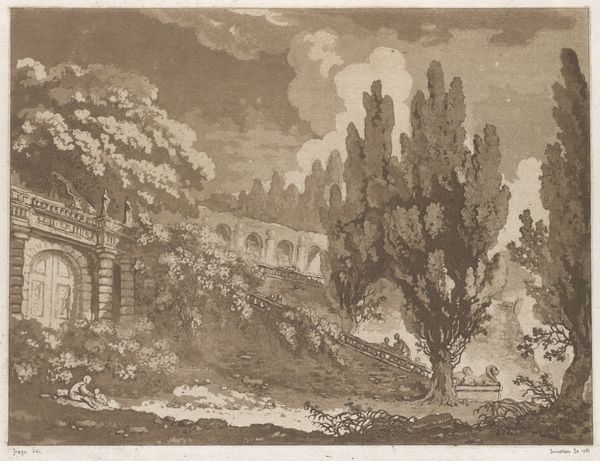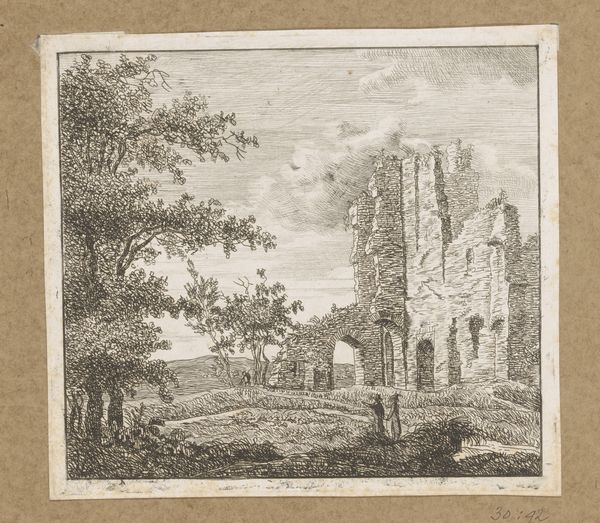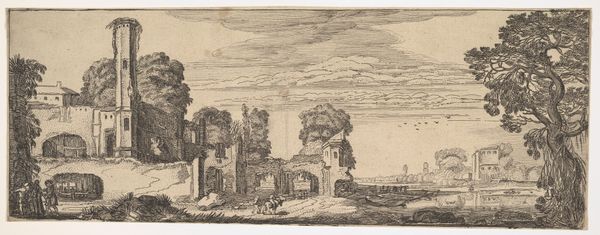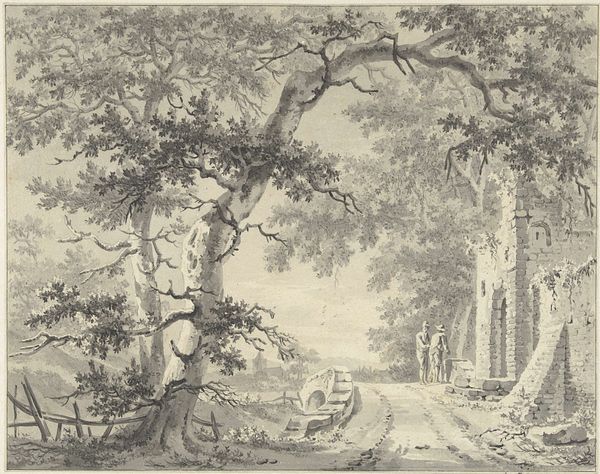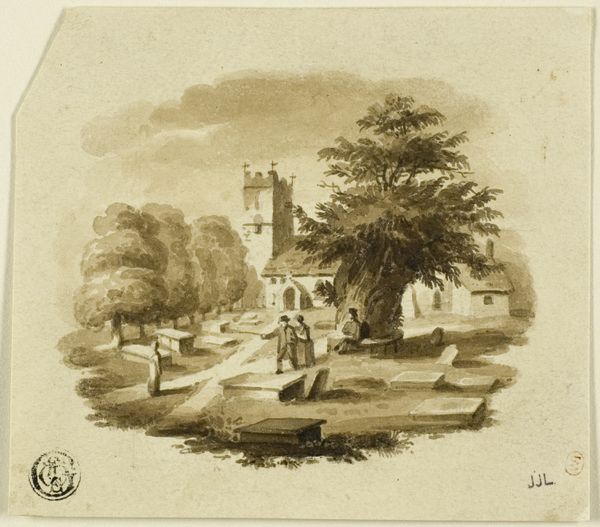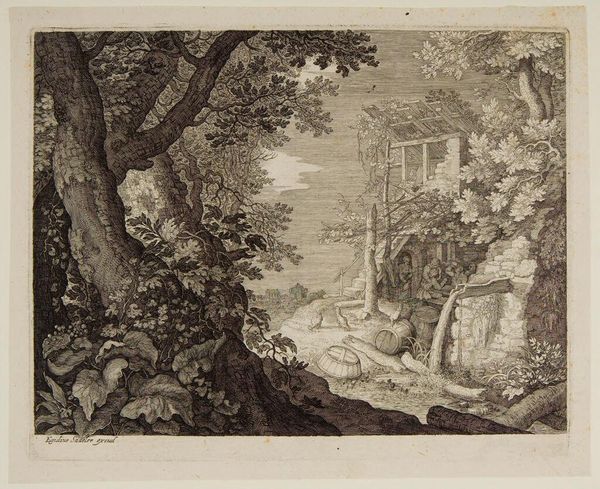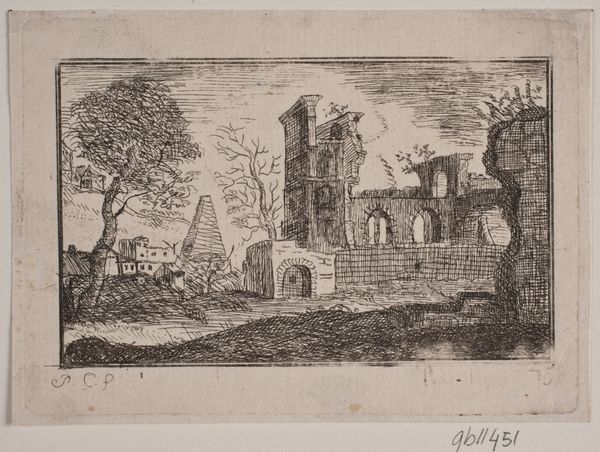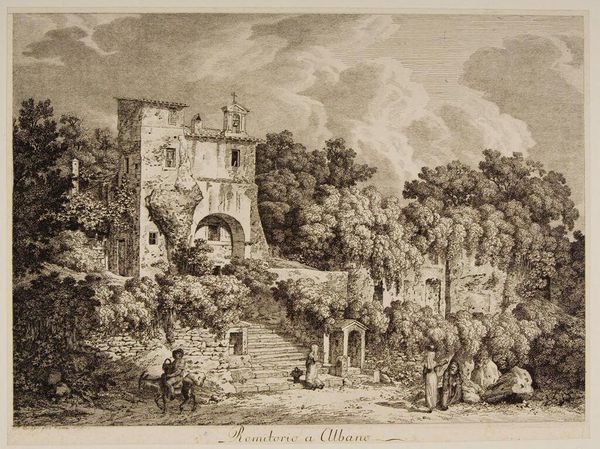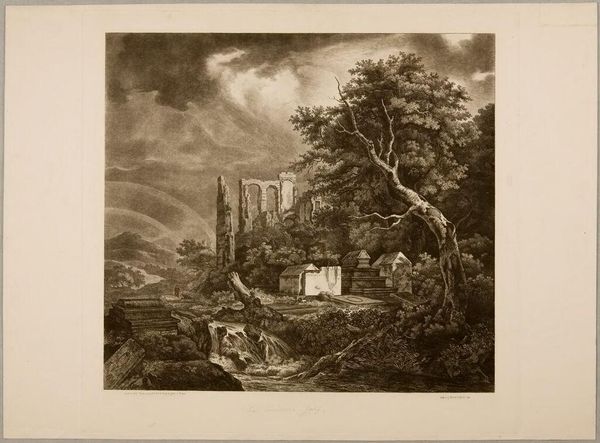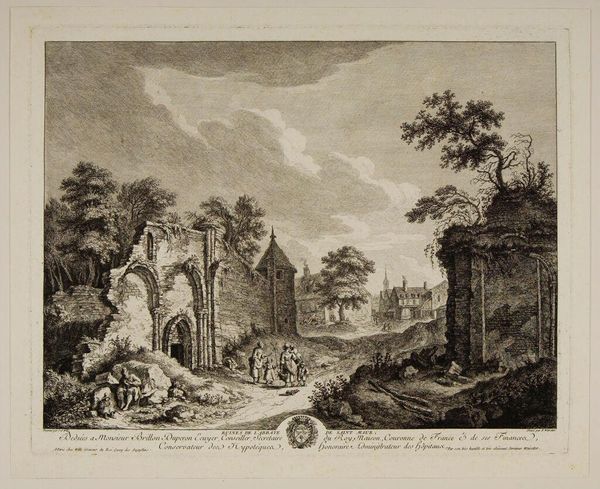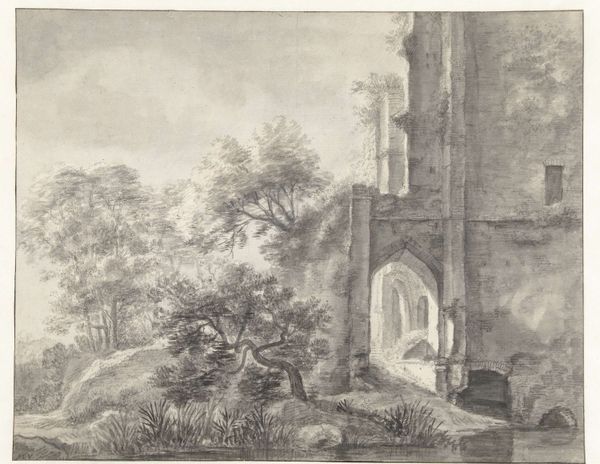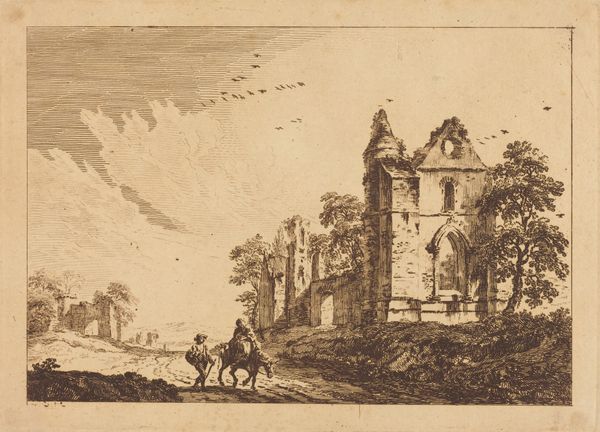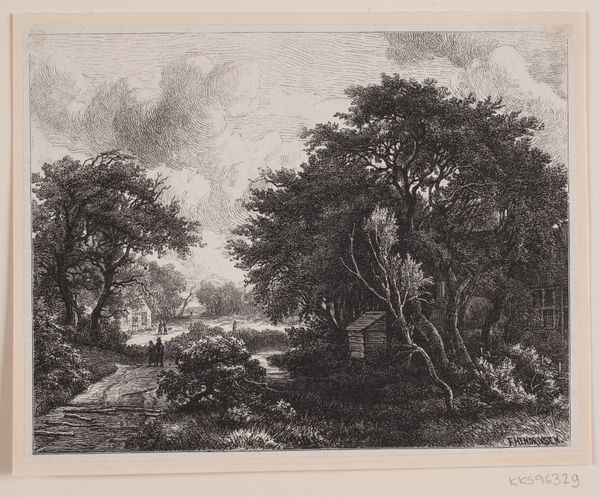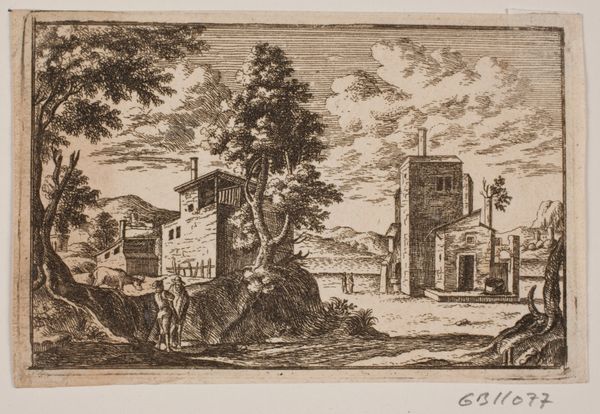
drawing, print, etching, ink
#
drawing
#
ink painting
# print
#
etching
#
pencil sketch
#
landscape
#
classical-realism
#
charcoal drawing
#
ink
#
pencil drawing
Dimensions: Overall: 10 11/16 x 13 7/16in. (27.1 x 34.2cm) plate: 10 11/16 x 13 9/16 in. (27.2 x 34.4 cm)
Copyright: Public Domain
Curator: It exudes a wistful, melancholic air, doesn’t it? All rendered in these monochrome brown washes. Editor: Indeed. The artwork is titled "Tempio di Serapide a Pozzuoli" and comes to us from 1767. Its creator, Jean Claude Richard, Abbé de Saint-Non, employed etching, ink and other drawing techniques in its creation. You can find it at the Metropolitan Museum of Art. Curator: Serapis, a fusion of Greek and Egyptian deities, embodies themes of rebirth and cyclical time. His temple speaks to the interconnectedness of cultures and beliefs, particularly evocative here with this interplay of ruins and everyday life. The architectural decay implies inevitable change, yet life continues amid the stones. The artist positions figures engaging in leisure activities in the foreground; their presence reminds us of the enduring human spirit amid fading grandeur. Editor: What’s fascinating is how Saint-Non uses ink washes to mimic the appearance of aged frescoes or sepia-toned photographs. Think about the availability of materials in the 18th century and his travel. Ink, etching tools, paper – these were all portable. This print almost democratizes the Grand Tour experience for those unable to physically travel to these sites. Consider, too, the labour involved in preparing the etching plates, the printing process, the distribution of these images – an entire cottage industry fueled by Neoclassical fervor. Curator: I see how that reading also enhances our grasp on his artistic intention. The classical elements themselves – the columns, the statuary – are all symbols of cultural heritage, artistic ambition, and the ongoing relevance of the past for subsequent eras. Editor: And its consumption; prints were widely collected, traded and bound into albums to contemplate in the comfort of your home or study! A tangible, portable piece of history consumed as leisure. Curator: Looking closer, I notice how Saint-Non has contrasted these man-made structural components with lush trees, indicating a broader integration of nature into his compositions. Editor: A stark tension between industry, economy, nature and culture. Curator: A beautiful dance indeed! One worth pondering further on our way out. Editor: Yes, a delicate print, encapsulating a much wider historical narrative regarding material and immaterial culture, right here at the Met!
Comments
No comments
Be the first to comment and join the conversation on the ultimate creative platform.
